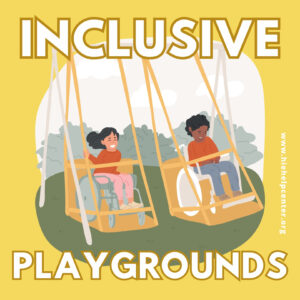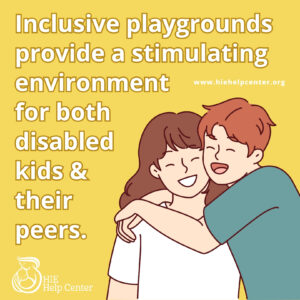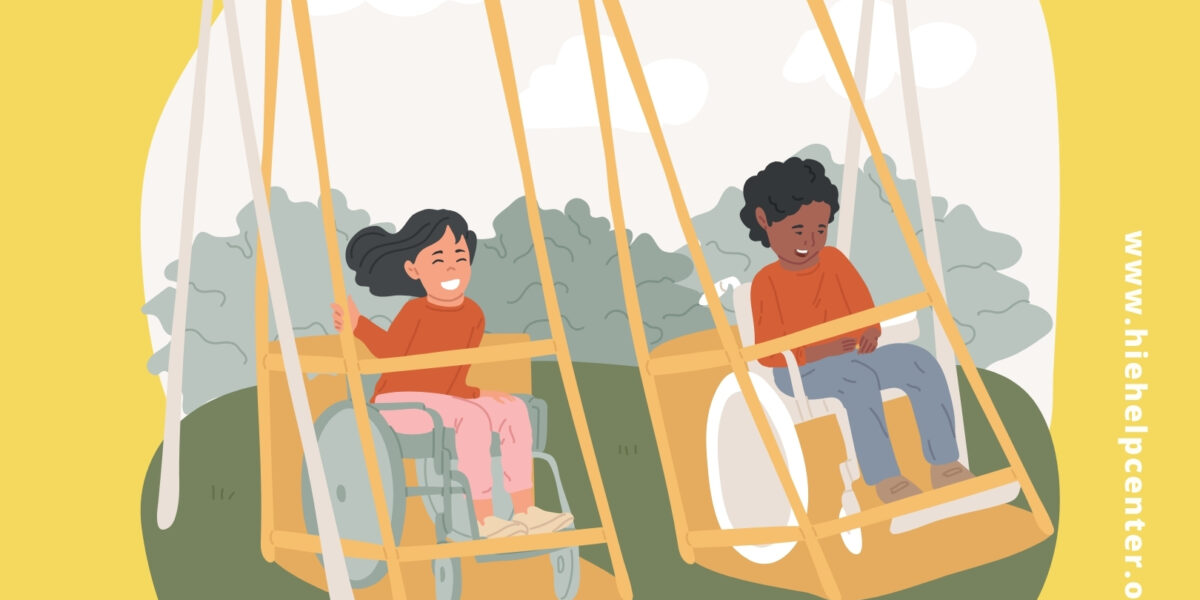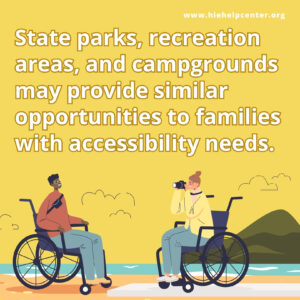 Playgrounds help children get active outside of structured after-school sports or mandated physical education class. They provide a setting for children to learn and reinforce valuable social skills as they interact with their peers. One key concern for parents of disabled children is whether or not these spaces will be accessible for their child.
Playgrounds help children get active outside of structured after-school sports or mandated physical education class. They provide a setting for children to learn and reinforce valuable social skills as they interact with their peers. One key concern for parents of disabled children is whether or not these spaces will be accessible for their child.
 Traditional playgrounds may have stairs, bungee walls, or sandy surfaces that can make the structures inaccessible to kids that use mobility aids. Inclusive playgrounds attempt to bridge the gap and provide a stimulating environment for both disabled children and their peers. Recently there has been a push to include more accessible playground structures on any new or updated school grounds because many existing structures do not meet ADA accessibility standards. Some grants are available to make these structures more accessible, but in many cases funding for these comes from local school districts and communities.
Traditional playgrounds may have stairs, bungee walls, or sandy surfaces that can make the structures inaccessible to kids that use mobility aids. Inclusive playgrounds attempt to bridge the gap and provide a stimulating environment for both disabled children and their peers. Recently there has been a push to include more accessible playground structures on any new or updated school grounds because many existing structures do not meet ADA accessibility standards. Some grants are available to make these structures more accessible, but in many cases funding for these comes from local school districts and communities.
How can I find inclusive playgrounds near me?
To find an inclusive playground near you, use www.accessibleplayground.net’s Playground Directory, which provides a list of accessible playgrounds both in the United States and worldwide. An internet search for ‘accessible or inclusive playground’ in your local area may also provide the most up-to-date answers.
Accessibility at state parks, historic sites and recreation areas
While they are not equivalent to inclusive playgrounds, state parks, recreation areas, and campgrounds can provide similar opportunities to families who have specific accessibility needs when embarking on outdoor adventures. Public lands managed by local Departments of Natural Resources often are accessible in some, if not all, portions of land. Individual state Departments of Natural Resources may provide listings that delineate each state park’s accessibility features. Check out accessible parks in:


 California
California